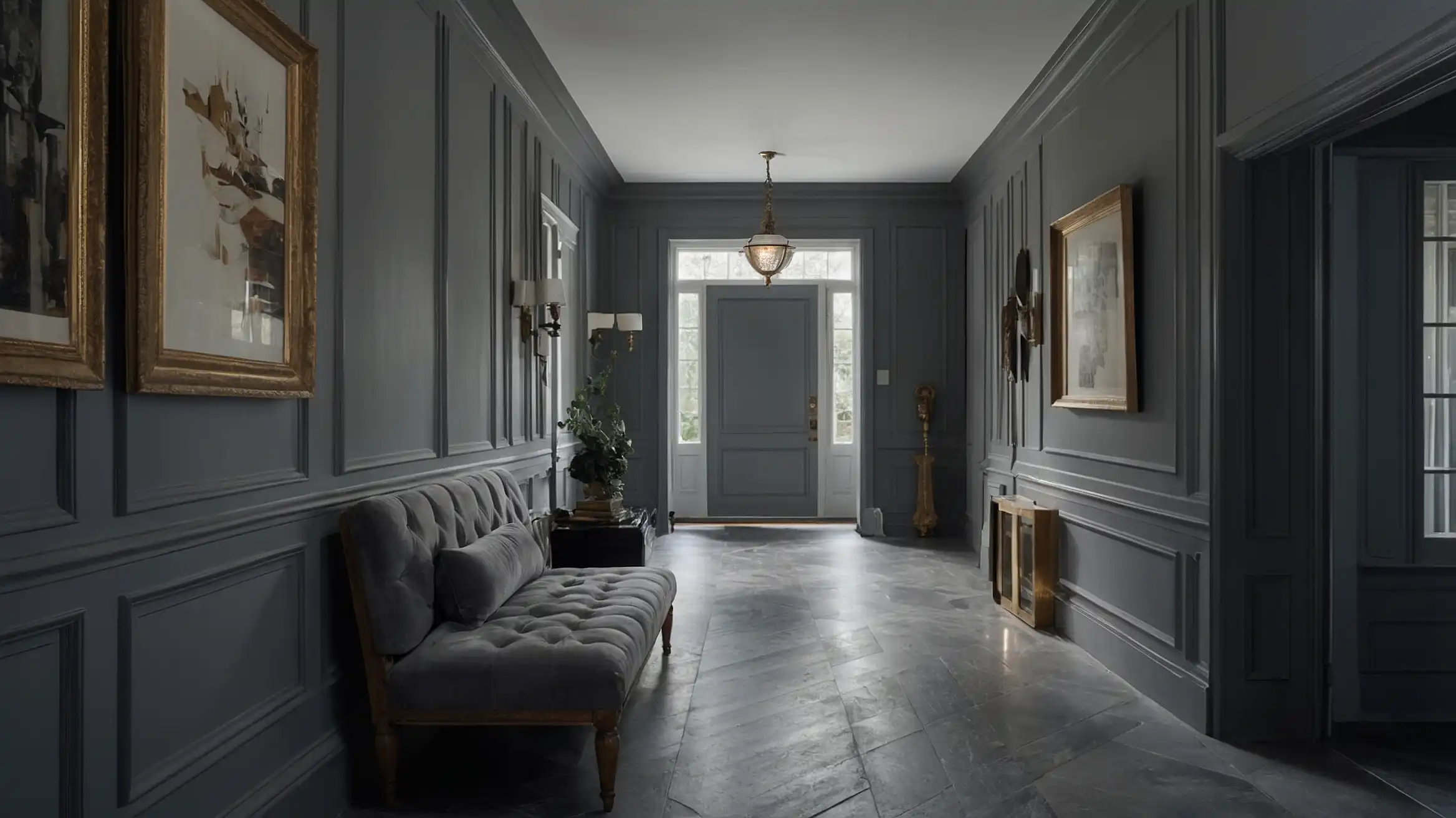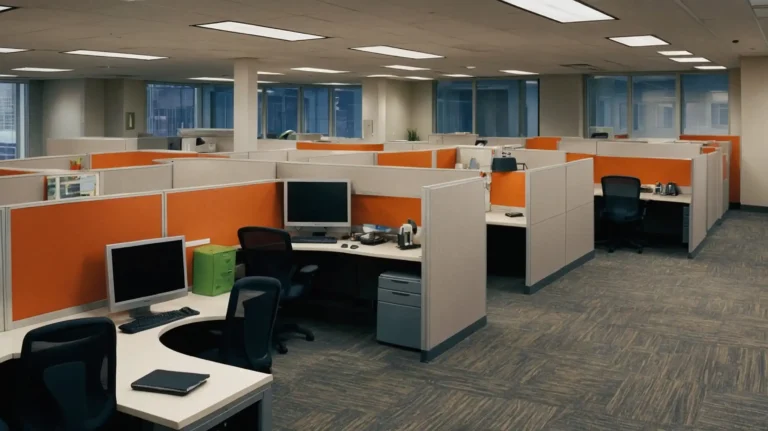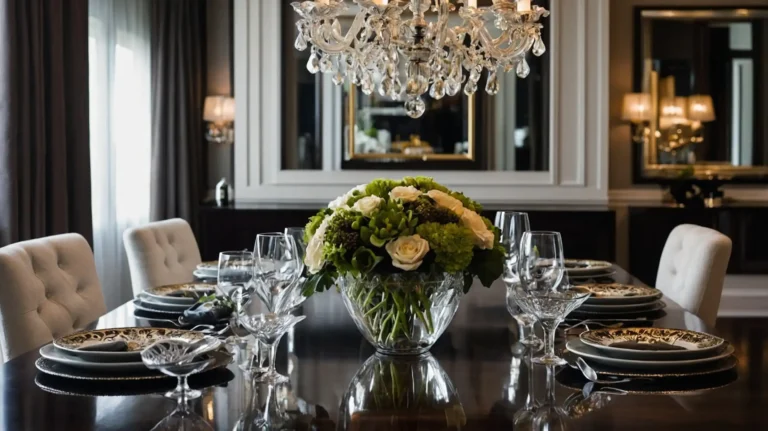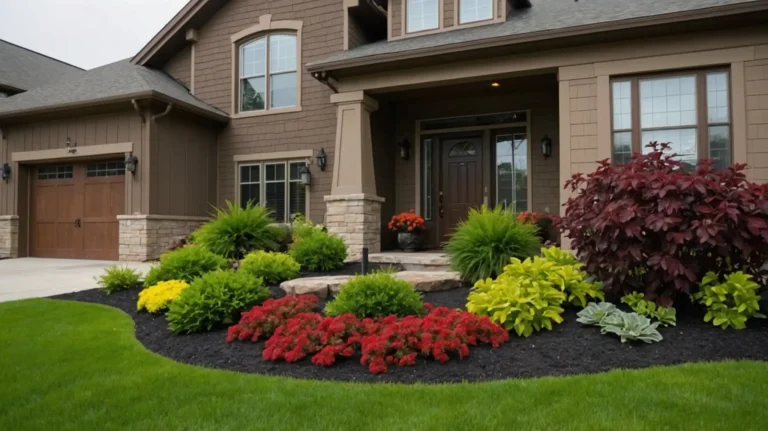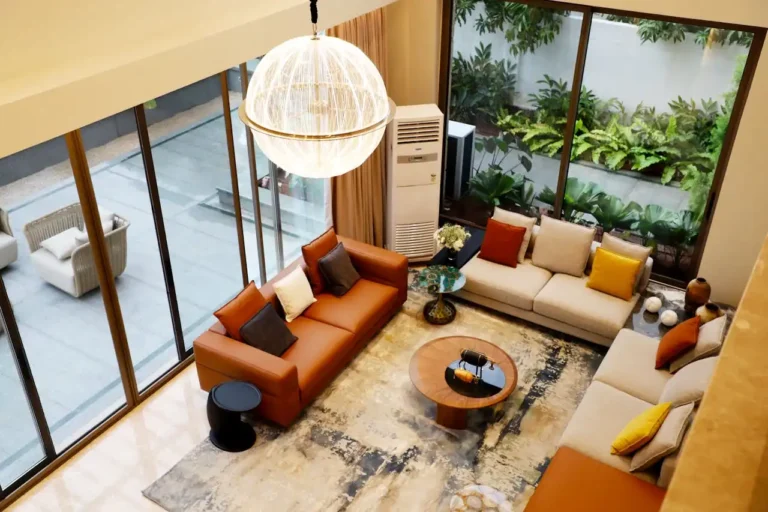21 Stunning Gray Hallway Ideas That Transform Forgotten Spaces into Design Statements
Hallways often serve as mere passageways in our homes, overlooked despite their potential to make powerful design statements.
Gray, with its remarkable versatility and timeless appeal, offers the perfect backdrop for these transitional spaces.
From soft dove to deep charcoal, gray creates a sophisticated foundation that complements virtually any design style.
This neutral powerhouse can make narrow corridors appear wider and low ceilings feel higher with the right application.
Ready to elevate your hallway from forgettable to fabulous?
These 21 gray hallway ideas will inspire you to transform this often-neglected space into a stunning design feature that sets the tone for your entire home.
1: Create an Ombré Wall Effect
Paint your hallway walls in a graduated ombré effect, transitioning from light gray at the ceiling to a deeper shade near the floor.
This technique adds visual interest and dimension.
The subtle color shift draws the eye along the length of the corridor.
Choose shades from the same color family for a cohesive look that creates movement without feeling disjointed.
2: Install Gray Wainscoting
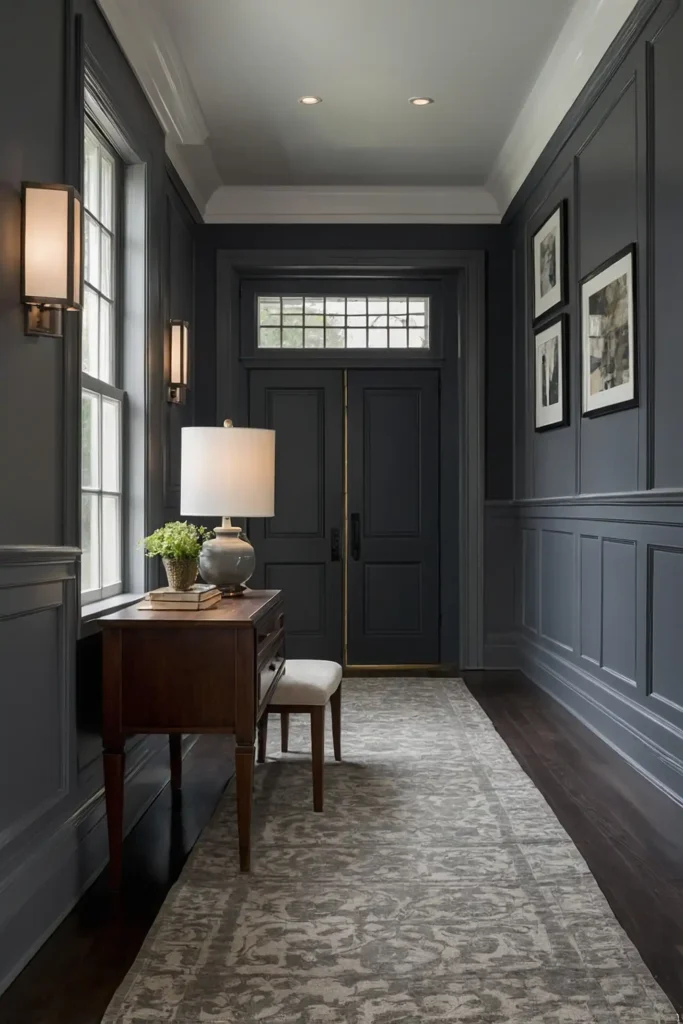
Apply classic wainscoting painted in a rich gray tone along the lower portion of your hallway walls.
This architectural detail adds texture and protection in high-traffic areas.
Pair with a lighter gray or crisp white above to create pleasing contrast.
The horizontal line created by the chair rail visually widens narrow hallways while adding traditional charm.
3: Hang a Gallery Wall

Mount a collection of artwork, photographs, or mirrors against a gray backdrop to create a personalized gallery wall.
The neutral background makes your displayed pieces pop.
Frame your pieces in coordinating metals or woods for cohesion.
Extend the display along the entire hallway or create a focused arrangement in a wider section for maximum impact.
4: Install Dramatic Lighting
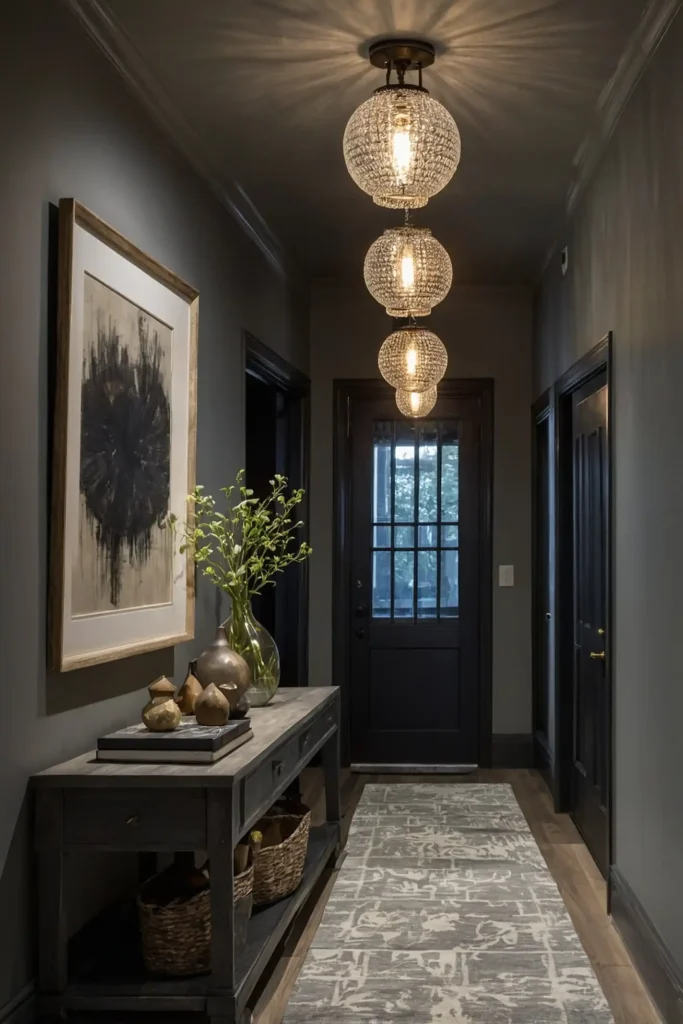
Replace bland overhead fixtures with statement lighting that casts interesting shadows on your gray walls.
Consider pendant lights, wall sconces, or an eye-catching chandelier.
Strategic lighting transforms the mood and functionality of your hallway.
Layer different light sources at varying heights to create depth and eliminate dark corners in your corridor.
5: Add a Bold Runner
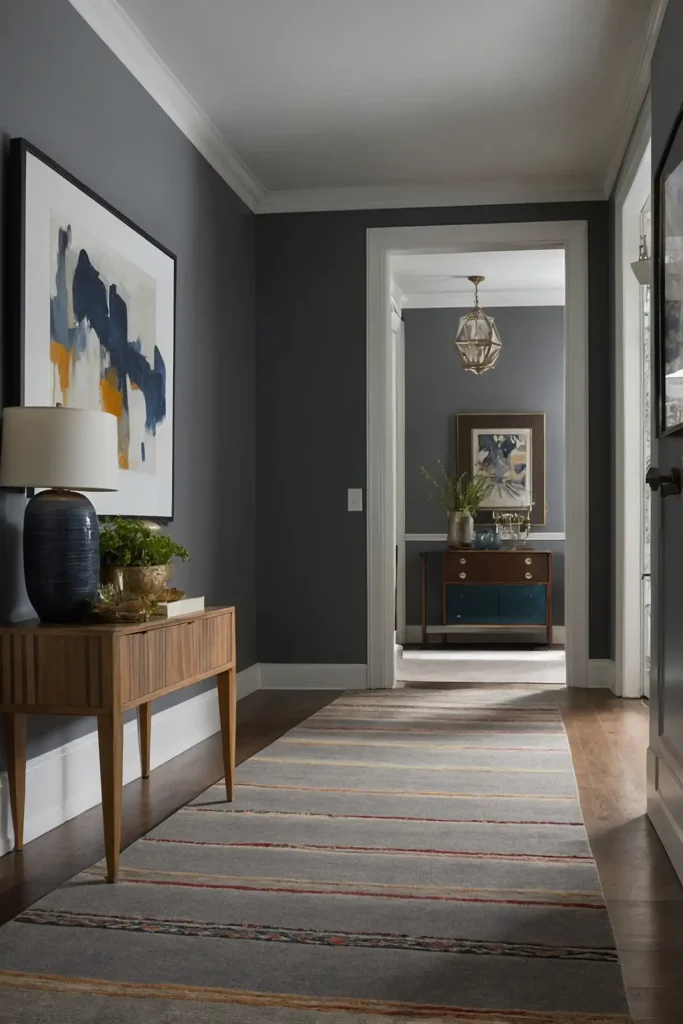
Anchor your gray hallway with a vibrant runner that introduces pattern and color.
Choose geometric designs, traditional motifs, or striking stripes that complement your gray palette.
Runners protect flooring in high-traffic areas while absorbing sound.
Select a design that guides the eye through the space and connects neighboring rooms with complementary colors.
6: Create Contrast With White Trim
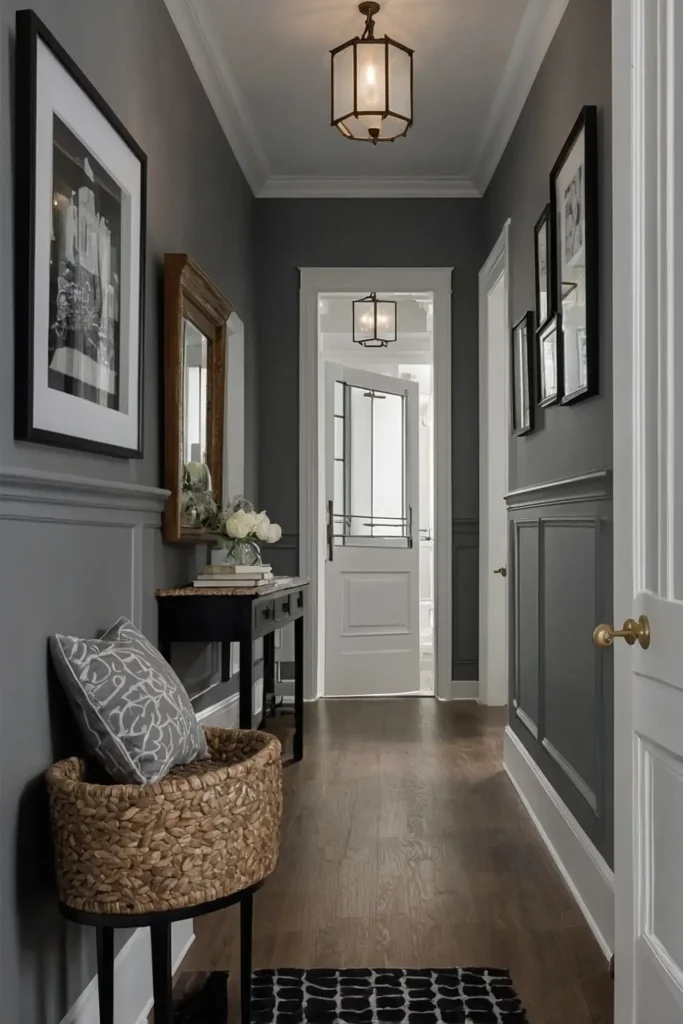
Paint your trim, doors, and moldings in crisp white against gray walls for classic contrast that highlights architectural details.
This timeless combination works with any style.
The sharp definition between gray walls and white woodwork creates visual interest.
Choose a gray with complementary undertones for a sophisticated, deliberately designed look.
7: Install Gray Paneling
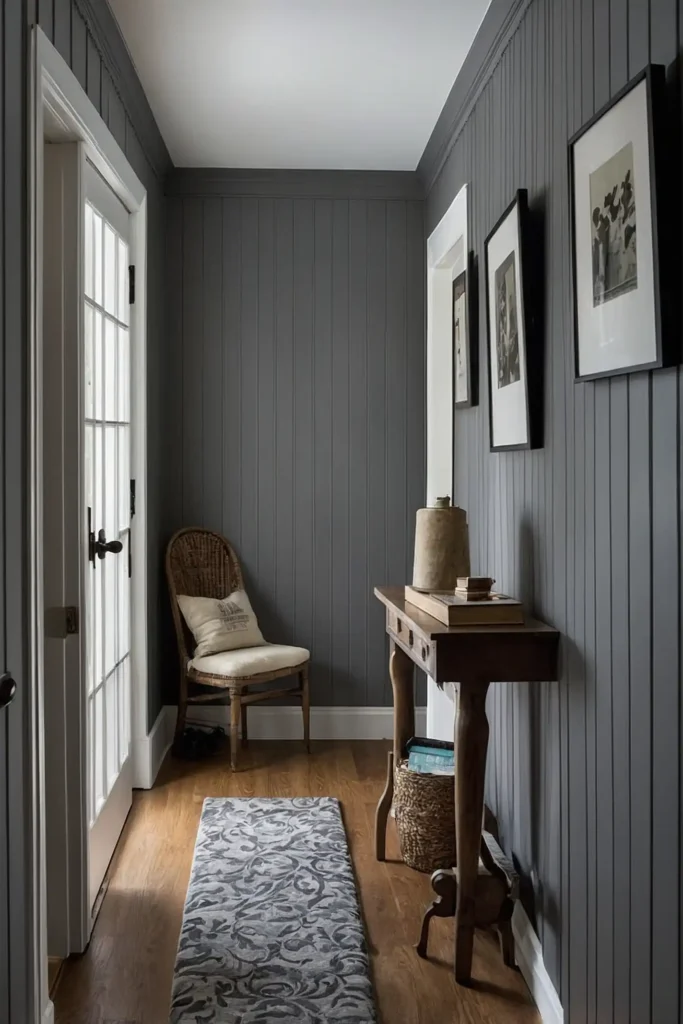
Cover your hallway walls with vertical tongue-and-groove or shiplap paneling painted in your favorite gray tone.
This adds texture and dimension that flat paint alone cannot achieve.
Paneling introduces architectural interest to featureless corridors.
Choose wider planks for a modern feel or narrower boards for a more traditional, cottage-inspired aesthetic.
8: Incorporate Mixed Metals
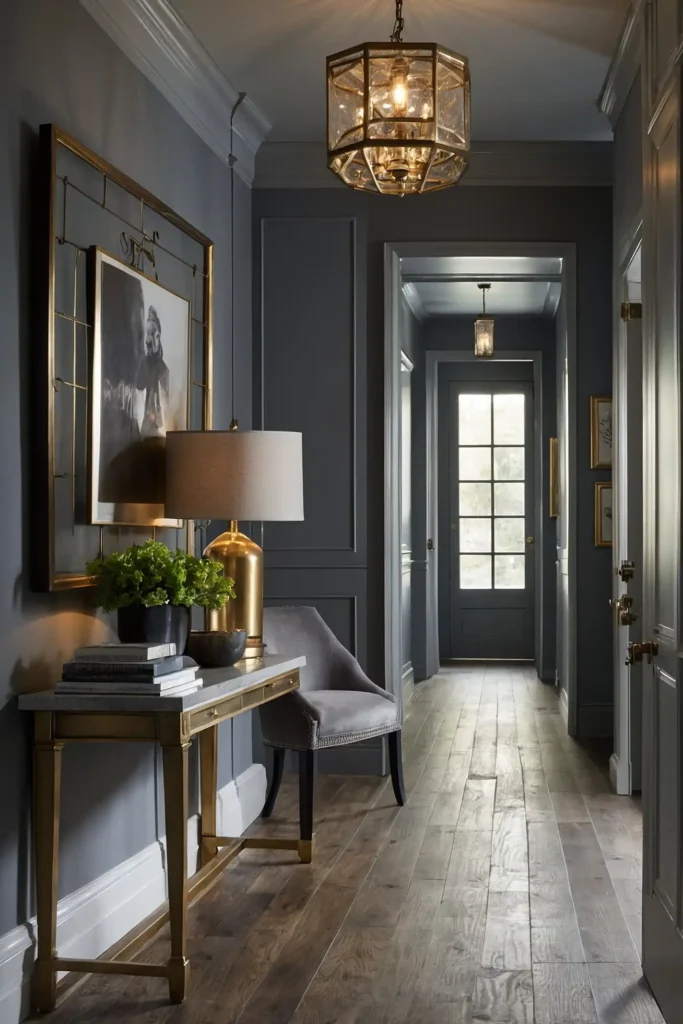
Add metallic accents through picture frames, light fixtures, and hardware in your gray hallway.
Mix silver, gold, copper, and brass for an eclectic yet cohesive look.
Metals introduce reflective surfaces that bounce light around your space.
The cool tones of gray provide the perfect neutral backdrop for these warm, shimmering elements.
9: Use Two-Tone Gray Walls
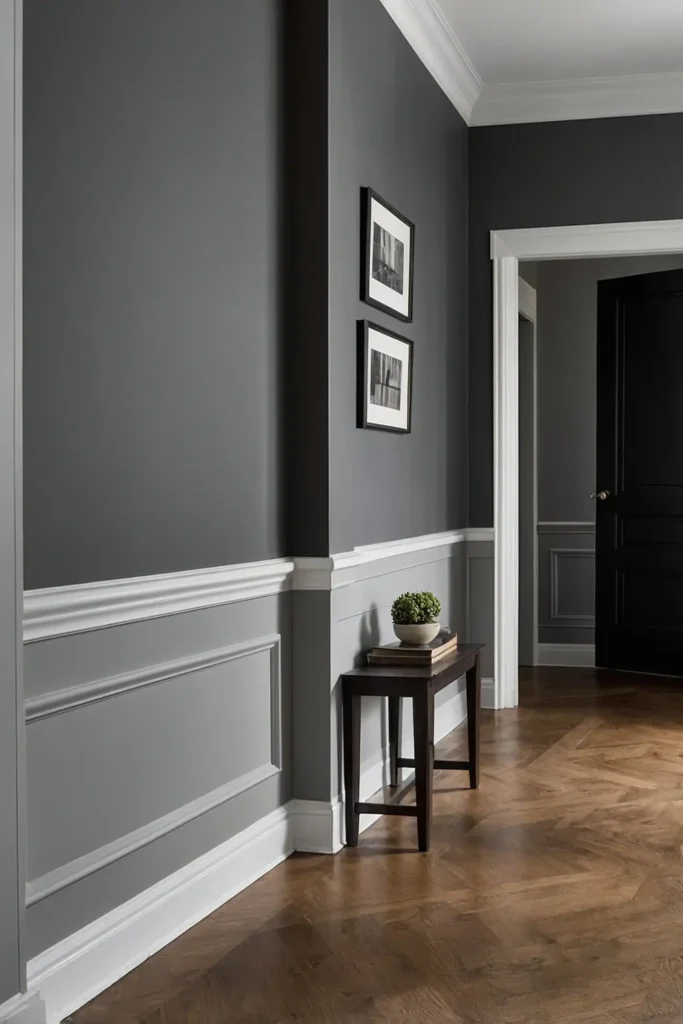
Paint the bottom half of your hallway in a darker gray and the top in a lighter shade, divided by a chair rail or decorative molding.
This technique grounds the space while maintaining airiness.
Two-tone walls create visual interest without overwhelming a narrow space.
This approach pays homage to traditional design while feeling thoroughly contemporary in execution.
10: Add Textured Wallpaper
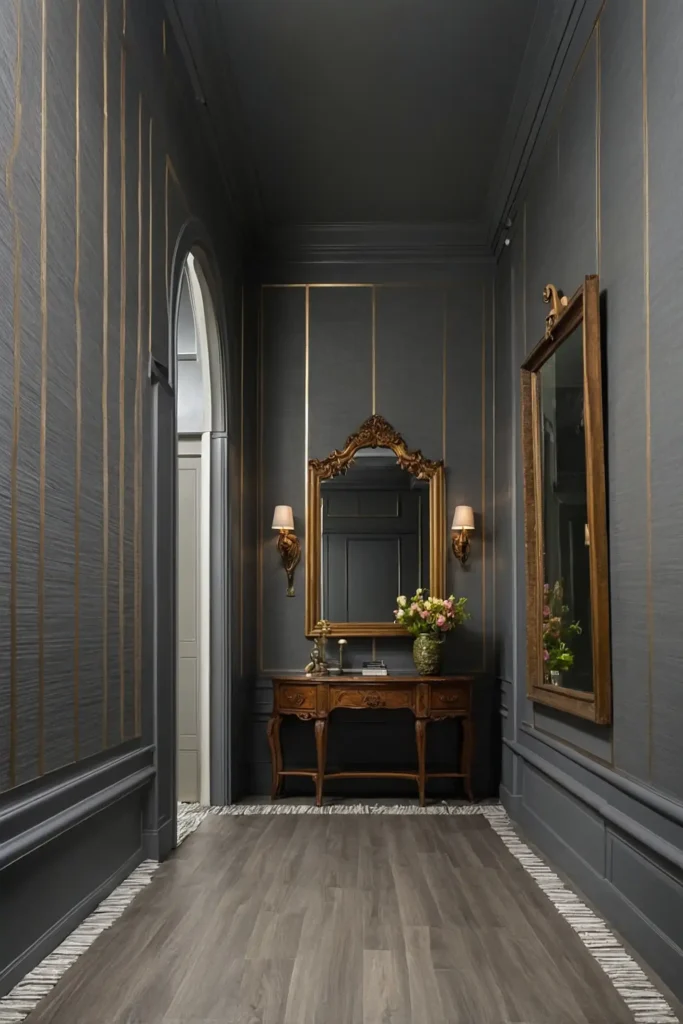
Install textured gray wallpaper to introduce subtle pattern and dimension.
Options range from grasscloth to embossed designs that add tactile interest to your hallway walls.
Texture prevents gray from falling flat and creates intriguing shadow play.
Choose papers with metallic elements to reflect light and add unexpected glimpses of shimmer as you pass.
11: Install Gray Flooring
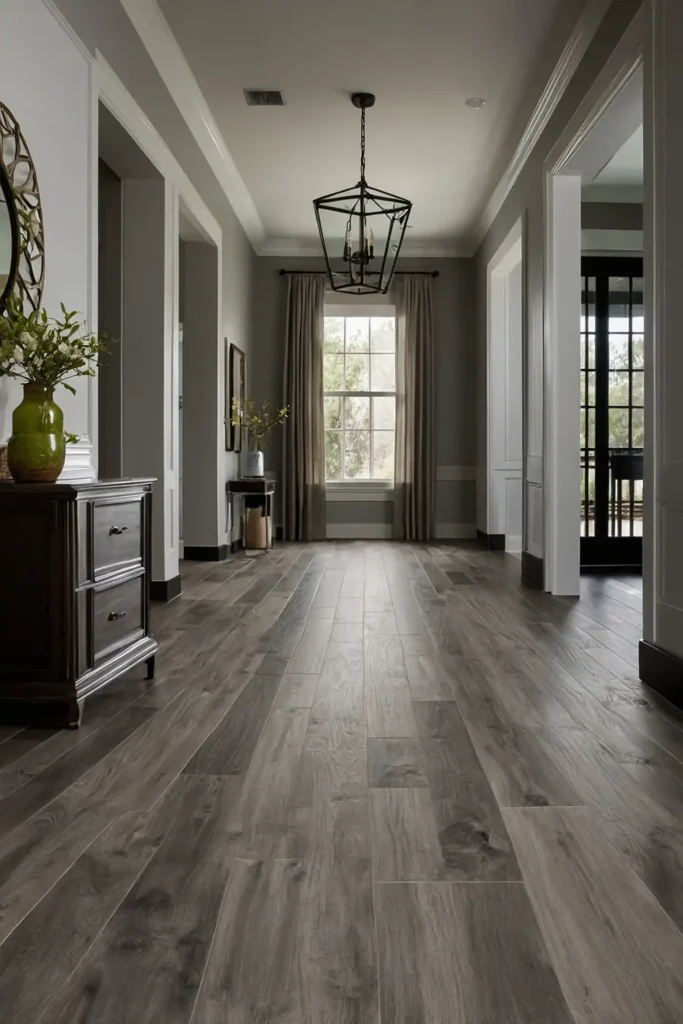
Replace outdated flooring with gray wood planks, luxury vinyl tile, or porcelain that mimics stone.
This creates a seamless flow and grounds your entire color scheme.
Gray flooring hides dirt and wear in high-traffic areas.
Choose warmer greige tones for inviting comfort or cooler slate tones for contemporary sophistication in your corridor.
12: Create a Statement Ceiling
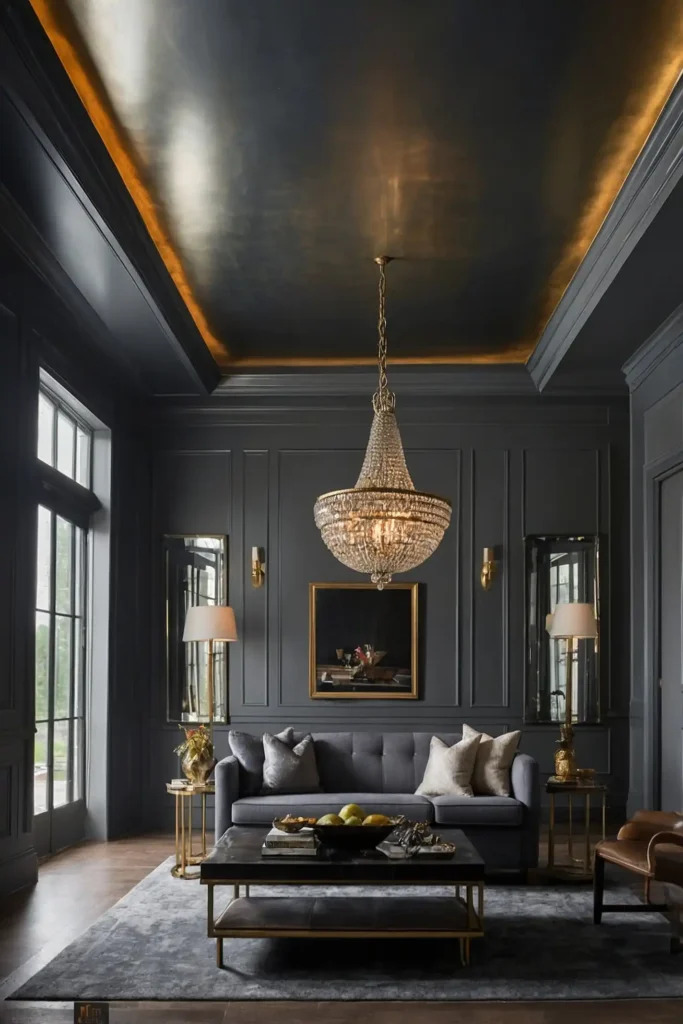
Paint your ceiling in a darker gray than your walls to create unexpected drama and architectural interest.
This technique draws the eye upward and adds dimension.
A darker ceiling introduces coziness without darkening the entire space.
Add subtle metallic details or a light fixture with crystal elements to bounce light throughout the corridor.
13: Add Gray Built-Ins
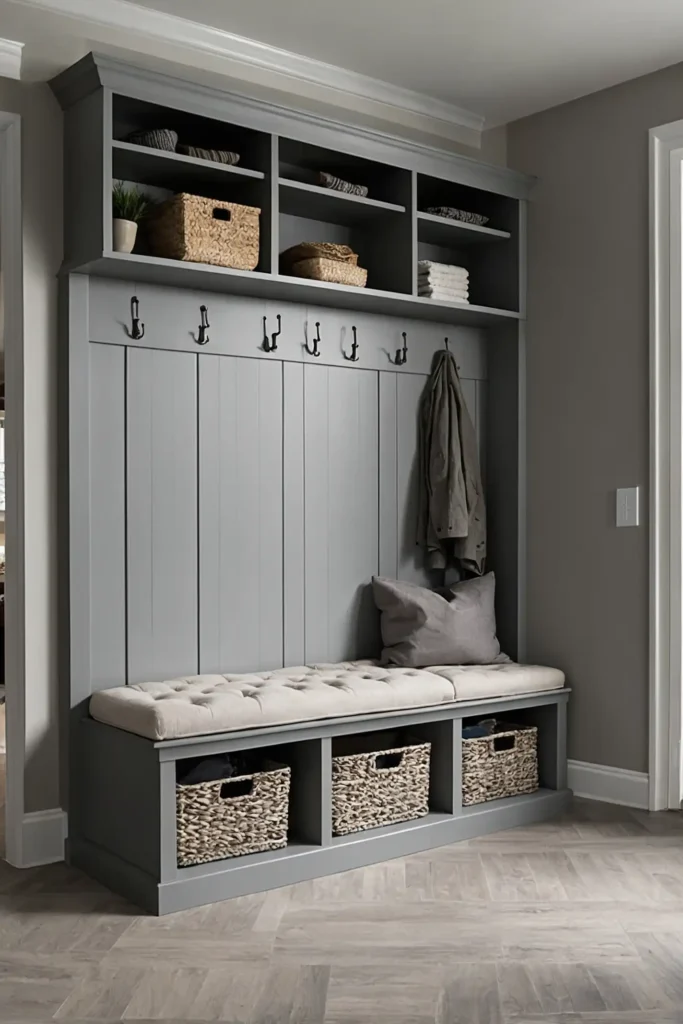
Install built-in storage painted in harmonious gray tones to maximize functionality in your hallway.
Include hooks, benches, and cubbies for practical organization that blends seamlessly.
Built-ins transform hallways into useful transition zones rather than mere passageways.
Choose hardware that contrasts with your chosen gray for definition and visual interest.
14: Incorporate Natural Elements
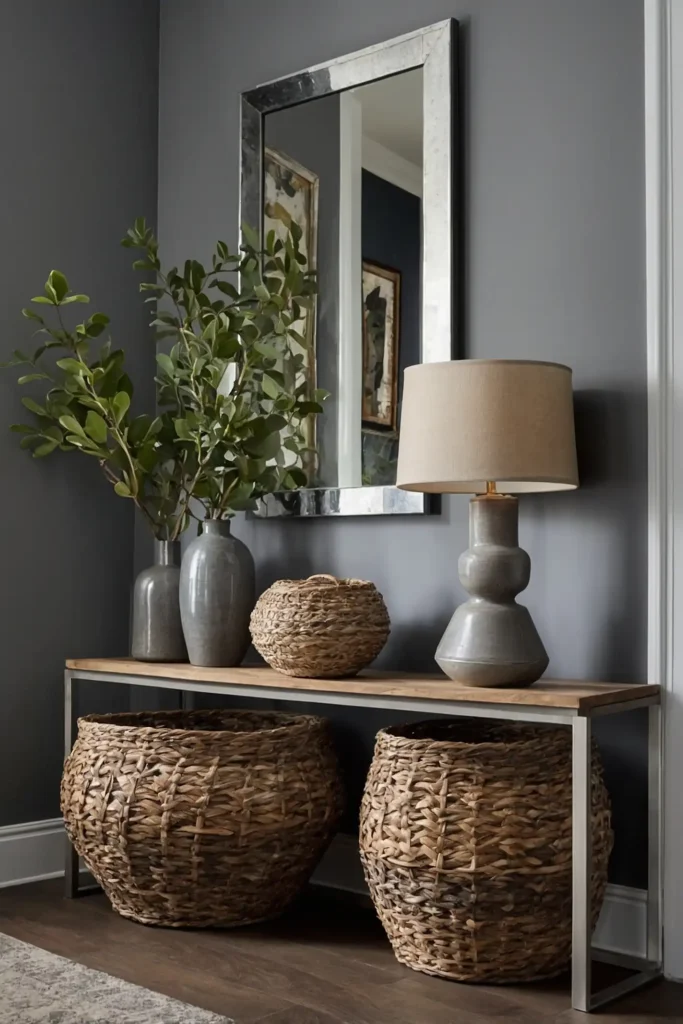
Balance the coolness of gray with natural wood, woven baskets, or plants.
These organic elements add warmth and life that prevents your hallway from feeling sterile.
Natural textures create sensory contrast against smooth gray surfaces.
Place a wood console table against a gray wall or hang woven pendants for balanced, layered design.
15: Use Gray as a Gallery Backdrop
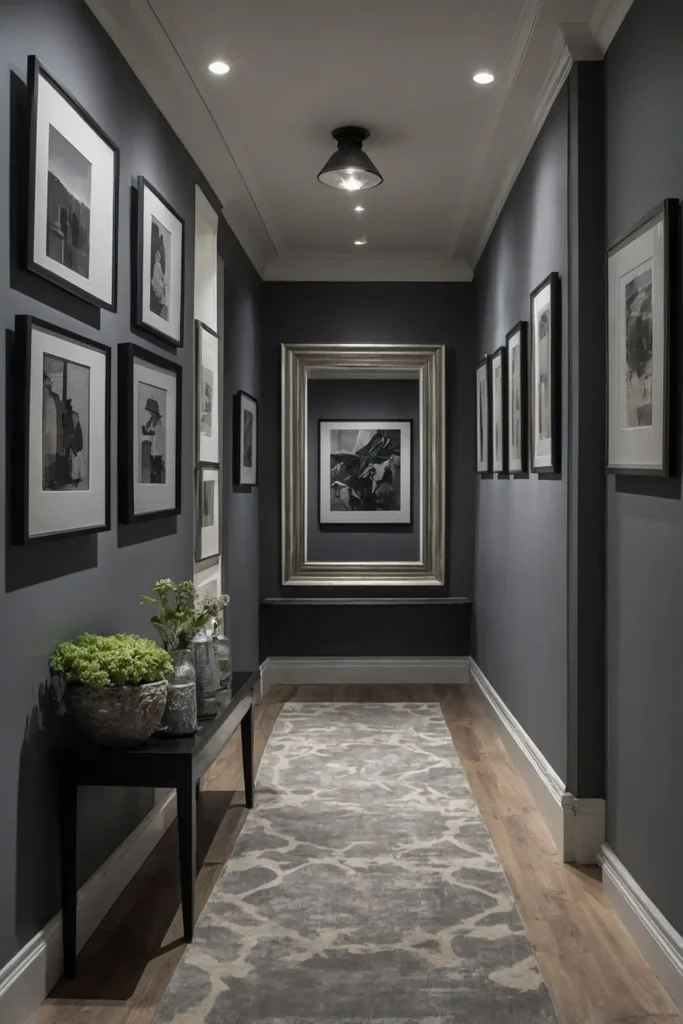
Paint your hallway in a mid-tone gray to create the perfect neutral background for displaying colorful artwork, similar to professional gallery walls.
This allows your collections to shine.
The right gray acts almost as a non-color that recedes visually.
Choose a shade with minimal undertones for the most versatile backdrop for rotating art displays.
16: Add an Accent Wall
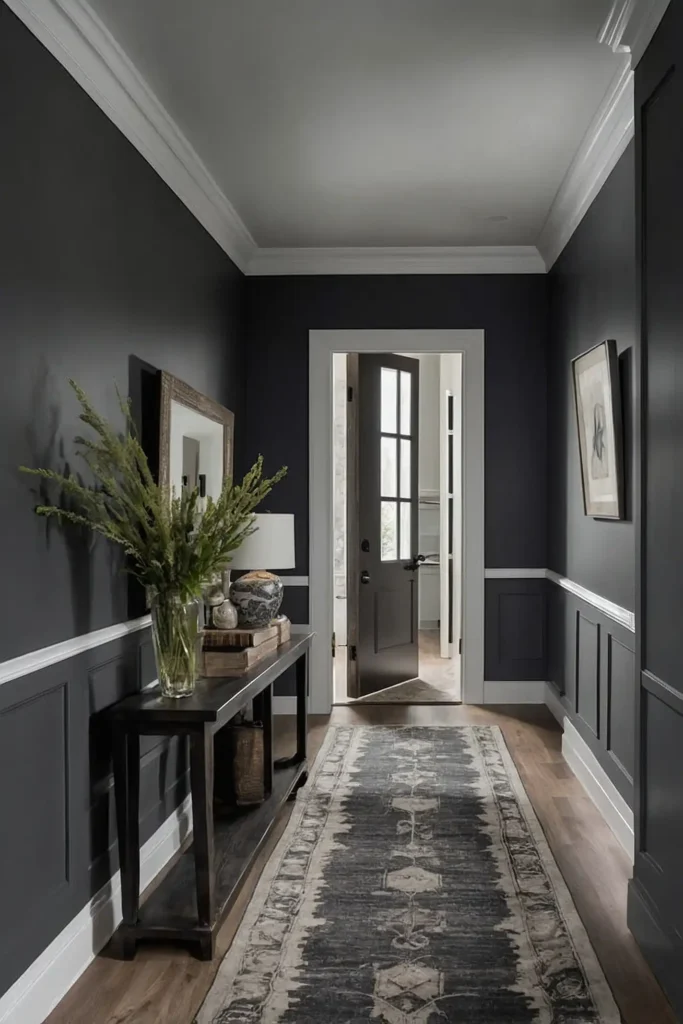
Paint one wall in a deeper charcoal while keeping others in a lighter gray.
This creates a focal point that adds depth and introduces architectural interest to your hallway.
An accent wall draws attention to architectural features or displayed items.
Position it strategically at the end of a long hallway to visually shorten the space, or use it to highlight art.
17: Install Reflective Elements
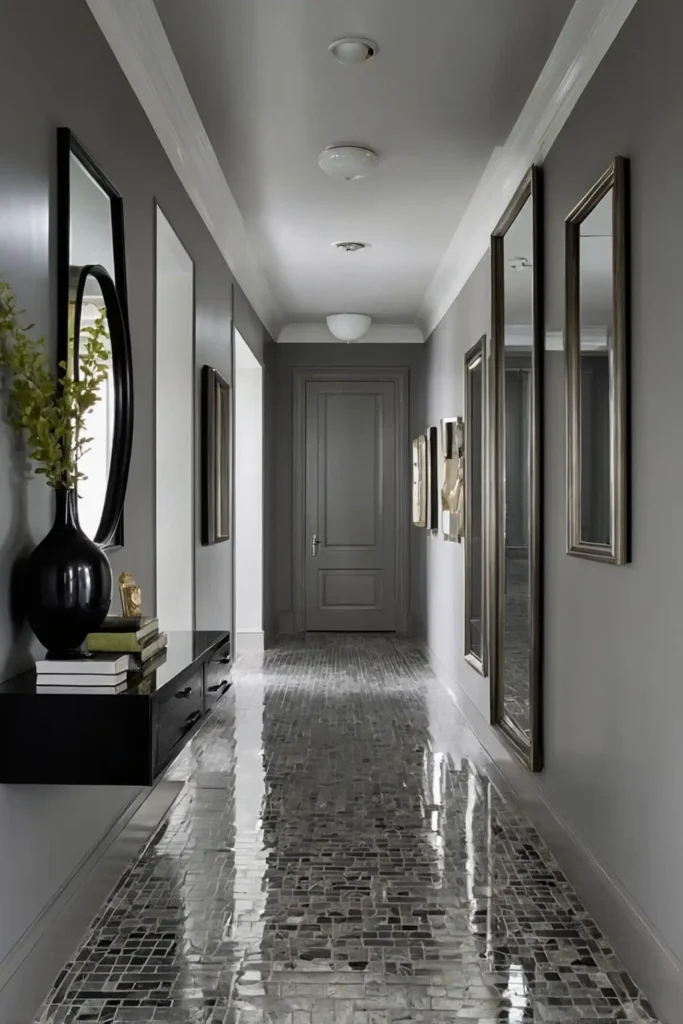
Incorporate mirrors, glass-front cabinets, or glossy tiles to reflect light throughout your gray hallway.
These reflective surfaces make the space feel larger and brighter.
Strategically placed mirrors create the illusion of width in narrow corridors.
Choose frames that complement your hardware finishes for a coordinated, thoughtful appearance.
18: Use Pattern on the Floor
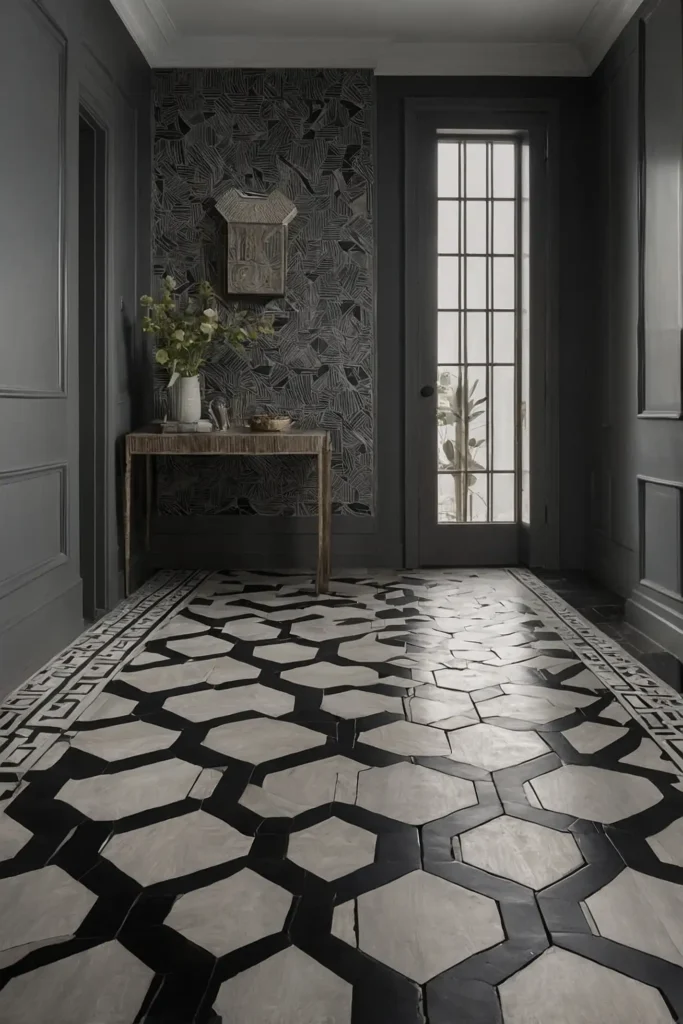
Install patterned tile or a geometric runner against simple gray walls to create visual interest from below.
This grounds the space while introducing personality and movement.
Floor patterns draw the eye forward through long corridors.
Hexagons, herringbone, or encaustic-inspired designs in grayscale create sophisticated impact without overwhelming the narrow space.
19: Add Architectural Molding
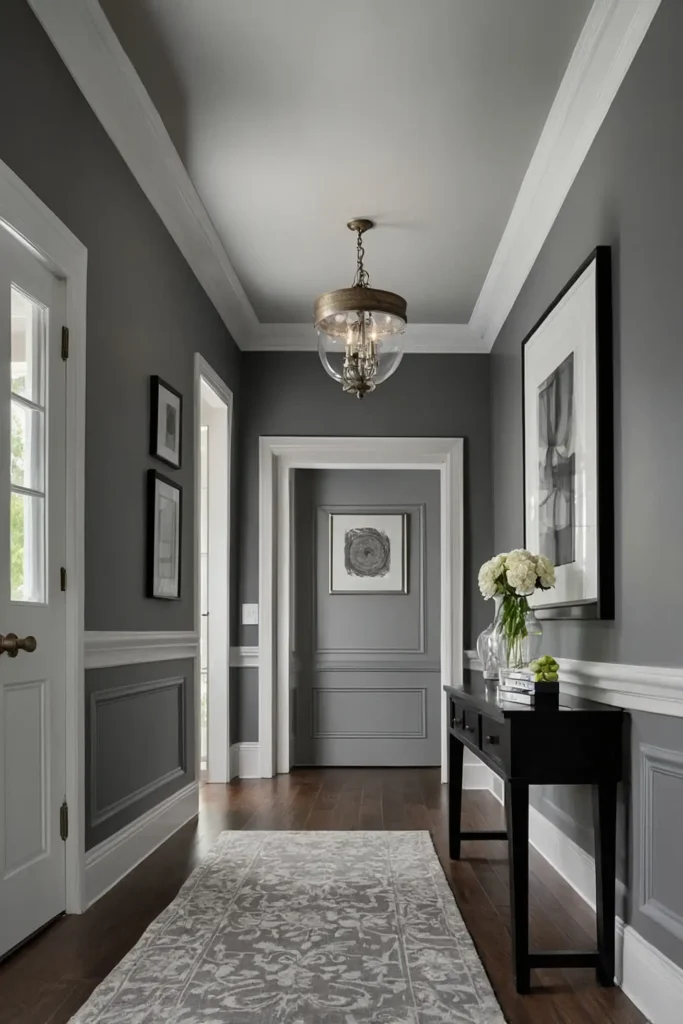
Install decorative crown molding, picture rails, or ceiling medallions painted the same color as your gray walls for subtle sophistication.
This monochromatic approach adds texture without contrast.
Tone-on-tone architectural details create rich visual interest.
This technique introduces traditional elegance that elevates simple hallways into designed transitional spaces.
20: Create Zones With Paint
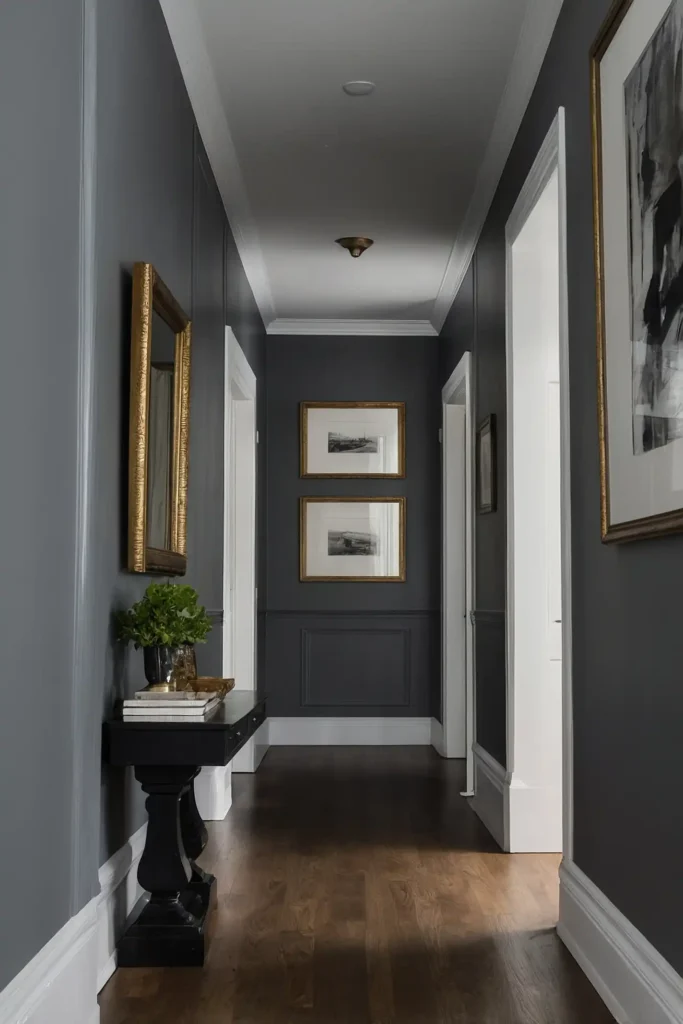
Use different shades of gray to define functional zones within a larger hallway.
Darker areas can indicate transitions while lighter sections expand narrower portions.
This subtle zoning guides movement through your home.
The color shifts create natural pauses and visual landmarks without disrupting the overall flow of your space.
21: Add Unexpected Color Pops
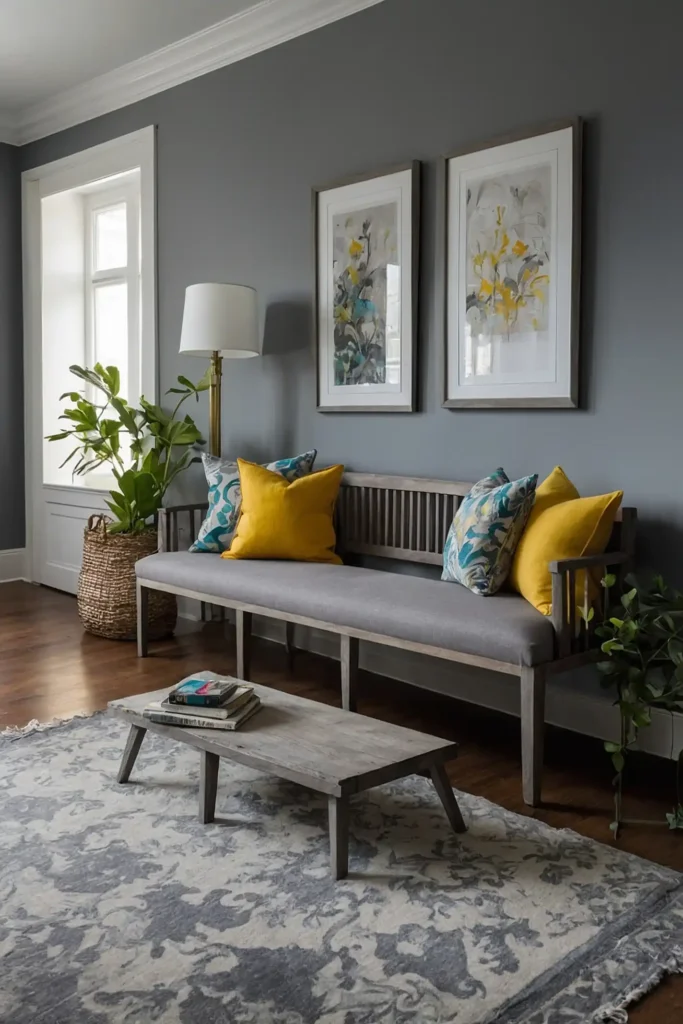
Introduce vibrant accent colors through artwork, a small bench, or decorative objects against your gray backdrop.
The neutral walls make these colorful elements stand out dramatically.
Select colors that complement the undertones in your gray.
Yellows and pinks pop against cool grays, while blues and greens harmonize beautifully with warmer gray variants.
Conclusion
With these 21 ideas, your gray hallway can transform from an overlooked passage into a design highlight.
By playing with texture, light, and thoughtful details, you’ll create a sophisticated transition space that elevates your entire home.

